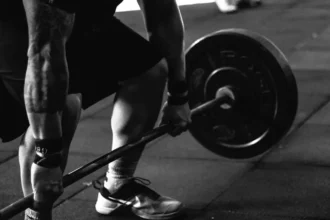
Stress affects everyone, but men often face unique challenges when it comes to managing psychological pressure effectively. According to the American Psychological Association, men are significantly less likely than women to seek help for stress-related issues, often choosing to bottle up their struggles instead.
This tendency to bottle up emotions isn’t just a personal preference; it’s deeply rooted in cultural expectations that have shaped how men approach mental health for generations. From childhood, many men learn that expressing vulnerability is weakness, leading to a dangerous pattern of suppressing stress until it manifests as physical health problems, relationship issues, or career burnout.
The statistics paint a concerning picture. Men are four times more likely to die by suicide than women, according to the World Health Organization, and they’re more likely to develop stress-related cardiovascular disease. These outcomes aren’t inevitable. With the right men stress management techniques, it’s possible to handle life’s pressures in healthier, more sustainable ways.
In this comprehensive guide, we’ll explore ten proven strategies that help men cope with stress without resorting to emotional suppression.
Also read: The Ultimate Men’s Health Guide: Fitness, Hormones, Nutrition & Care (2025)
Understanding Men and Stress
Why Men Often Bottle Up Stress
The relationship between men and stress management is complicated by generations of cultural conditioning. Traditional masculinity norms across different societies often emphasize stoicism, self-reliance, and emotional control. While these traits can be valuable in certain situations, they become problematic when they prevent men from addressing stress in healthy ways.
Many men learn early that showing emotional distress might be perceived as weakness or failure. This message gets reinforced through media representations, workplace cultures, and social interactions that reward the “strong silent type” approach to handling difficulties. The result is a generation of men who view stress management as something they should handle alone, without outside support or emotional expression.
Research from the National Institute of Mental Health shows that men often express stress differently than women. Instead of seeking social support or discussing their feelings, men might increase work hours, engage in risky behaviors, or turn to substances as coping mechanisms. These approaches provide temporary relief but often amplify stress in the long term.
The Cost of Suppressed Stress
When men consistently bottle up stress, the consequences extend far beyond temporary discomfort. Chronic stress suppression creates a cascade of physical and mental health issues that can significantly impact quality of life and longevity.
Physically, suppressed stress contributes to cardiovascular disease, high blood pressure, and weakened immune system function. The Harvard Medical School research indicates that chronic stress increases cortisol production, leading to weight gain, sleep disruption, and increased risk of diabetes.
Mental health consequences include increased rates of depression, anxiety, and substance abuse. When stress has no healthy outlet, it often manifests as irritability, mood swings, or emotional numbness that affects relationships and work performance. Many men report feeling disconnected from their families and friends, creating a cycle where isolation increases stress levels even further.
Career and relationship impacts are equally significant. Unmanaged stress can lead to decreased job performance, conflict with colleagues, and difficulty maintaining intimate relationships. Partners and children often bear the brunt of suppressed stress through emotional distance or unpredictable mood changes.
10 Proven Stress Management Techniques for Men
1. Physical Exercise and Movement
Exercise stands out as one of the most effective stress management techniques for men, offering both immediate stress relief and long-term mental health benefits. Physical activity naturally reduces cortisol levels while increasing endorphin production, creating a powerful biochemical response that combats stress.
The beauty of exercise as a stress management tool lies in its versatility. Cardiovascular activities like running, cycling, or swimming provide excellent outlets for built-up tension and anxiety. Many men find that a challenging workout session helps them process difficult emotions without having to verbalize them initially.
Strength training offers unique psychological benefits for men dealing with stress. The focus required during weightlifting sessions creates a meditative state that interrupts anxious thought patterns. Plus, the physical strength gains can boost confidence and provide a sense of control during stressful periods.
Martial arts deserve special mention as stress relief activities that appeal to many men. Disciplines like boxing, Brazilian jiu-jitsu, or traditional martial arts combine physical exertion with mental discipline, teaching valuable stress management skills while providing an excellent workout.
Starting an exercise routine doesn’t require expensive gym memberships or extensive time commitments. Even 20-30 minutes of daily physical activity can significantly impact stress levels. Walking, bodyweight exercises, or sports activities with friends all provide substantial stress management benefits while being accessible regardless of budget or location.
The key to sustainable exercise habits is finding activities you genuinely enjoy. Experiment with different types of movement until you discover what feels engaging rather than burdensome. Remember, the best exercise routine is the one you’ll actually stick with consistently.
2. Mindfulness and Meditation
Despite common misconceptions, mindfulness and meditation aren’t passive or “soft” approaches to stress management. These practices require mental discipline and can be incredibly effective tools for men dealing with high-pressure situations.
Meditation works by training your mind to observe thoughts and emotions without immediately reacting to them. This skill proves invaluable during stressful moments, allowing you to respond thoughtfully rather than reactively. Research from Johns Hopkins shows that just eight weeks of regular meditation practice can create measurable changes in brain structure related to stress response.
For beginners, starting with short sessions is crucial. Five to ten minutes of daily meditation can provide significant benefits without feeling overwhelming. Simple breathing meditation, where you focus on your breath while acknowledging wandering thoughts, offers an excellent introduction to mindfulness practices.
Many men find guided meditation apps helpful for establishing consistent practices. Apps like Headspace, Calm, or Insight Timer provide structured programs specifically designed for stress management. These tools make meditation accessible anywhere, fitting easily into commutes, lunch breaks, or evening routines.
Body scan meditations work particularly well for men who struggle with traditional sitting meditation. This practice involves systematically focusing on different parts of your body, helping develop awareness of physical stress manifestations while promoting relaxation.
The goal isn’t to eliminate thoughts or achieve perfect calm. Instead, meditation builds your capacity to observe stress without being overwhelmed by it, creating space for more thoughtful responses to challenging situations.
3. Open Communication with Trusted People
Breaking the pattern of emotional isolation requires deliberate effort to build and maintain meaningful connections with others. This doesn’t mean you need to share every detail of your inner life, but having trusted individuals you can talk to during stressful periods is essential for mental health.
Identifying the right people for these conversations is crucial. Look for friends, family members, or colleagues who demonstrate good listening skills, maintain confidentiality, and respond supportively rather than judgmentally. Sometimes this might be a longtime friend; other times, it could be a mentor, coach, or support group member.
Starting these conversations can feel awkward initially, especially if you’re not used to discussing personal challenges. Begin with smaller disclosures about work stress or everyday frustrations. As comfort levels increase, you can gradually share more significant concerns.
Professional support through counseling or therapy provides another valuable communication outlet. Many men initially resist therapy, viewing it as admission of failure or weakness. In reality, therapy is a practical tool for developing better coping strategies and processing complex emotions in a safe environment.
Online therapy platforms have made professional support more accessible and less intimidating for many men. Services like BetterHelp or Talkspace offer flexible scheduling and messaging options that accommodate busy lifestyles while maintaining privacy.
Cultural considerations play an important role in communication approaches. Different backgrounds may have varying comfort levels with emotional expression, and it’s important to find communication styles that feel authentic to your background while still providing necessary emotional support.
4. Creative Outlets and Hobbies
Creative activities provide excellent stress relief by engaging different parts of the brain and offering constructive ways to process emotions. Many men discover that hands-on creative projects help them work through stress more effectively than traditional talk-based approaches.
Music offers multiple pathways for stress management. Playing instruments, writing songs, or even listening to music mindfully can significantly reduce stress levels. The rhythmic nature of music naturally regulates breathing and heart rate, promoting relaxation while providing emotional expression opportunities.
Visual arts like drawing, painting, or photography allow men to explore and express feelings that might be difficult to verbalize. These activities don’t require artistic talent or expensive supplies; simple sketching or smartphone photography can provide meaningful stress relief.
Hands-on hobbies such as woodworking, mechanical projects, or cooking combine creativity with practical skills development. These activities provide tangible results that boost confidence while offering meditative focus during the creation process. Many men find that working with their hands helps quiet mental chatter and provides perspective on stressful situations.
Writing, whether through journaling, creative fiction, or even work-related projects, helps organize thoughts and emotions while providing clarity on complex situations. Regular writing practice can reveal stress patterns and potential solutions that weren’t obvious during busy daily routines.
The key to using creative outlets for stress management is consistency rather than perfection. Set aside regular time for creative activities, even if it’s just 15-20 minutes a few times per week. The goal is stress relief and personal expression, not creating masterpieces.
5. Time in Nature
Spending time outdoors provides scientifically proven stress management benefits that are particularly effective for many men. Research from Stanford University shows that spending time in natural environments can reduce rumination and lower activity in brain regions associated with depression and anxiety.
Nature exposure doesn’t require extensive wilderness adventures or expensive outdoor gear. Even urban parks, gardens, or tree-lined streets can provide stress relief benefits. The key is intentional engagement with natural environments rather than simply being outdoors while focused on phones or work concerns.
For men living in urban areas with limited nature access, creative solutions can still provide benefits. Indoor plants, nature photography, or even nature sound recordings can offer some stress relief benefits when outdoor time isn’t available. However, actual outdoor exposure remains the most effective approach when possible.
Weekend outdoor activities like hiking, fishing, camping, or sports provide more intensive nature immersion that can reset stress levels and provide perspective on work and relationship challenges. These activities often combine multiple stress management benefits, including physical exercise, social connection, and mindfulness practice.
Gardening deserves special mention as a stress management activity that combines nature exposure with physical activity and creative expression. Whether it’s a small herb garden on a windowsill or a larger outdoor garden, caring for plants provides ongoing stress relief while producing tangible results.
The goal is to find outdoor activities that feel enjoyable rather than stressful. Start small with regular walks in nearby parks or brief lunch breaks outside, then gradually increase outdoor time as it becomes a valued part of your routine.
6. Breathing Techniques and Relaxation
Controlled breathing techniques offer immediate stress relief that can be used anywhere, anytime, without special equipment or extensive training. These practices work by activating the parasympathetic nervous system, which counteracts the stress response and promotes relaxation.
The 4-7-8 breathing technique, developed by Dr. Andrew Weil, provides a simple but effective stress management tool. Breathe in for 4 counts, hold for 7 counts, then exhale for 8 counts. This pattern naturally slows heart rate and promotes calm focus, making it particularly useful during high-stress moments or before important meetings.
Box breathing, used by military personnel and athletes, involves equal counts for inhaling, holding, exhaling, and holding again. This technique helps regulate the nervous system while providing mental focus that can interrupt anxiety or stress spirals.
Progressive muscle relaxation combines breathing with physical tension release. Starting with your toes and working upward, tense each muscle group for 5 seconds, then release while breathing out. This practice helps identify where you hold stress physically while teaching your body how to relax systematically.
Diaphragmatic breathing, or belly breathing, strengthens the natural relaxation response over time. Place one hand on your chest and one on your stomach, then breathe so that the stomach hand moves more than the chest hand. This deeper breathing pattern becomes automatic with practice, providing ongoing stress management benefits.
The advantage of breathing techniques is their immediate accessibility during stressful situations. Practice these methods during calm moments so they become natural responses during challenging times.
7. Setting Healthy Boundaries
Learning to establish and maintain boundaries is crucial for sustainable stress management, particularly for men who often feel pressure to say yes to every request or opportunity. Healthy boundaries protect your time, energy, and mental health while improving overall effectiveness in work and relationships.
Work-life balance requires deliberate boundary setting around time, communication, and availability. This might mean establishing specific hours for checking email, declining non-essential meetings, or taking actual lunch breaks instead of working through them. While some industries have demanding cultures, most situations allow for more boundaries than initially apparent.
Learning to say no professionally requires tact but is essential for managing workload and stress levels. Practice phrases like “I’m not available for that timeframe” or “That doesn’t align with my current priorities” to decline requests respectfully while maintaining professional relationships.
Digital boundaries have become increasingly important for stress management. Constant connectivity through smartphones and social media creates ongoing stress that many men don’t recognize until they step away from devices intentionally. Consider implementing phone-free hours, social media breaks, or designated technology-free spaces in your home.
Personal relationship boundaries involve communicating your needs clearly while respecting others’ boundaries as well. This might include asking for space during stressful periods, setting limits on family obligations, or being clear about your availability for social events.
Cultural workplace considerations vary significantly across different industries and regions. What constitutes appropriate boundaries in one environment might not work in another. The key is finding balance between respecting cultural norms and protecting your mental health and well-being.
8. Sleep Optimization
Quality sleep forms the foundation of effective stress management, yet many men sacrifice sleep in attempts to manage busy schedules or demanding workloads. Poor sleep creates a cycle where stress interferes with rest, and insufficient rest increases stress sensitivity the following day.
Creating a sleep-friendly environment involves controlling temperature, light, and noise levels in your bedroom. Most people sleep best in cool, dark, quiet environments. Consider blackout curtains, white noise machines, or earplugs if your sleeping environment isn’t naturally conducive to rest.
Establishing consistent bedtime routines signals your body to prepare for sleep naturally. This might include dimming lights an hour before bed, avoiding screens, engaging in quiet activities like reading, or practicing relaxation techniques. The key is consistency; your body responds to routine by naturally preparing for sleep at appropriate times.
Common sleep disruptors include caffeine consumption late in the day, alcohol before bedtime, large meals close to sleep time, and exposure to blue light from screens. Addressing these factors often dramatically improves sleep quality without requiring major lifestyle changes.
Exercise timing affects sleep quality significantly. While regular physical activity improves sleep, intense workouts close to bedtime can be stimulating rather than relaxing. Aim to finish vigorous exercise at least 3-4 hours before planned sleep time.
If sleep problems persist despite good sleep hygiene practices, consider consulting healthcare providers to rule out sleep disorders or other medical issues that might be interfering with rest and contributing to stress levels.
Also read: How Sleep Affects Your Fitness Results
9. Nutrition and Hydration
What you eat and drink directly impacts your body’s ability to manage stress effectively. While nutrition can’t eliminate stress, proper fueling helps your body maintain stable energy levels and stress hormone balance throughout challenging periods.
Stress-fighting nutrients include omega-3 fatty acids found in fish and nuts, magnesium from leafy greens and seeds, and B vitamins from whole grains and lean proteins. These nutrients support nervous system function and help regulate stress hormone production naturally.
Avoiding stress-inducing substances can be as important as including beneficial foods. Excessive caffeine can increase anxiety and interfere with sleep, while too much sugar creates energy spikes and crashes that worsen stress responses. Alcohol might seem relaxing initially but often disrupts sleep and increases anxiety over time.
Meal planning for busy lifestyles doesn’t require complicated cooking or extensive preparation. Simple strategies like batch cooking proteins on weekends, keeping healthy snacks available, and having backup meal options can prevent stress eating or skipping meals during busy periods.
Proper hydration affects mood, energy levels, and cognitive function significantly. Even mild dehydration can increase stress hormone levels and reduce mental clarity. Aim for adequate water intake throughout the day, adjusting for activity levels and climate conditions.
Cultural dietary considerations matter when implementing nutrition changes. Work with foods and eating patterns that align with your cultural background and preferences while making gradual improvements that support better stress management.
10. Professional Support and Therapy
Recognizing when to seek professional help is a sign of strength and practical problem-solving rather than weakness or failure. Mental health professionals provide specialized tools and perspectives that can dramatically improve stress management effectiveness.
Different types of therapy offer various benefits for men dealing with stress. Cognitive Behavioral Therapy (CBT) focuses on identifying and changing thought patterns that contribute to stress. Solution-focused therapy emphasizes practical problem-solving strategies. Group therapy provides peer support and normalized discussions about men’s mental health challenges.
Online therapy platforms have made professional support more accessible and less intimidating for many men. These services offer flexible scheduling, message-based communication options, and privacy that can feel more comfortable than traditional office visits.
Overcoming stigma around mental health treatment often requires reframing therapy as practical skill development rather than admitting problems or weakness. Think of therapy like working with a personal trainer for your mental health; it’s professional coaching to develop better performance under pressure.
Global mental health resources vary by location, but most regions have crisis support lines, community mental health centers, or online resources available. The World Health Organization provides international mental health resources and information that can help locate appropriate support in different countries.
Creating Your Personal Stress Management Plan
Developing effective men stress management techniques requires honest assessment of your current stress levels and lifestyle patterns. Start by identifying your primary stress triggers, current coping mechanisms, and available time and resources for implementing new strategies.
Choose 2-3 techniques from this list that feel most appealing or feasible given your current situation. Trying to implement everything at once often leads to overwhelm and abandonment of all strategies. Building sustainable habits requires starting small and adding complexity gradually.
Track your progress through simple methods like rating daily stress levels, noting mood changes, or keeping brief logs of which techniques you used and their effectiveness. This information helps identify what works best for your specific situation and personality.
Building a support network might involve connecting with friends who share similar interests in health and stress management, joining community groups, or working with professionals who can provide ongoing guidance and accountability.
Remember that effective stress management is an ongoing process rather than a destination. Your needs and circumstances will change over time, requiring adjustments to your stress management approach. The goal is developing a flexible toolkit of strategies you can adapt as needed.
Conclusion
Managing stress effectively doesn’t require abandoning masculine strength or becoming someone you’re not. The techniques outlined in this guide acknowledge the real pressures men face while providing practical, proven strategies for handling stress in healthier ways.
The strongest men are those who recognize when they need support and take action to address challenges before they become overwhelming. Whether it’s through physical exercise, meaningful conversations, creative outlets, or professional therapy, there are multiple paths to better stress management that align with different personalities and lifestyles.
Breaking the cycle of bottled-up stress starts with a single step. Choose one technique from this list that resonates with you and commit to trying it consistently for one week. Notice the impact on your mood, energy levels, and relationships. This small beginning can lead to significant improvements in your overall quality of life and stress resilience.
Your mental health matters not just to you, but to everyone who depends on you being at your best. Taking care of your psychological well-being is one of the most important investments you can make in your future self, your relationships, and your ability to handle whatever challenges life presents.





